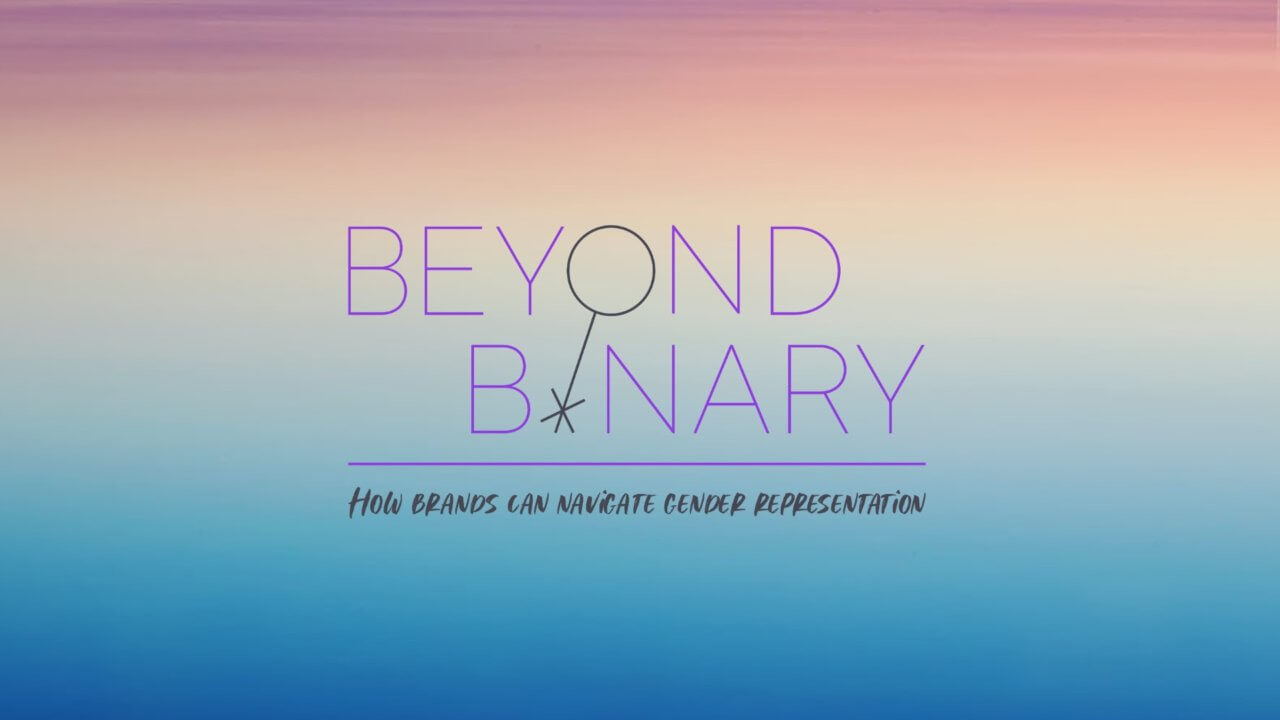Our Data Analyst, Megan, recently attended a webinar hosted by our good friends at Sign Salad and the7stars to learn all about their Beyond Binary white paper. Here’s what she learnt:
In 2020 discussions around gender identity and inequality have moved to the forefront of the public consciousness. News stories about JK Rowling’s transphobia, the Me Too movement and an increase in transgender representation on TV and in Film have led to mainstream awareness of how gender roles are evolving in the 21st Century.
Gender is a social construct which changes over time. A lot of traditional, widespread gender norms are now seen as offensive and outdated. Stereotypes like women traditionally being viewed as submissive housewives, while men were seen as the ambitious bread winners are now viewed as sexist overgeneralisations. Gender is more nuanced than simply masculine/feminine, and gender roles have been changing and evolving into a more fluid spectrum for decades.
So how can brands keep up with an ever-changing gender landscape? Media agency the7stars along with Sign Salad and Neuro-Insight address this in their new whitepaper which explores how brands can keep up with what gender means to people today. They suggest 3 key themes to understanding gender representation in today’s culture.
Gender is a story
Firstly, people’s beliefs about gender are deeply ingrained from a young age – we subconsciously learn about gender roles from our surroundings and mass media. These beliefs can be reinforced by stereotypical advertising. Therefore, brands should play a role in challenging gender norms rather than reinforcing them. An example of a brand that does this well is Rihanna’s beauty brand Fenti, which includes models of different genders rather than focusing exclusively on women. They also put diversity and inclusivity at the forefront of the brand and make a big effort to ensure that products appeal to people of all skin tones, compared to mainstream beauty brands which focus almost exclusively on catering to white women. By doing this, Fenti is challenging the stereotype that it is only women who use make up and beauty products and more accurately reflecting the diversity of their customers.
Cultural context matters
Our gender identity is shaped by the cultures and contexts which surround us – like religion, ethnicity, income etc. Gender inequality is intersectional, it is just one of many power imbalances that interact to form oppressive structures, and this theme is about recognising how other marginalised groups intersect with gender. Brands should be aware not just of gender issues but of the wider context in which they exist; to appeal to younger generations, brands need to give a voice to marginalised groups and causes. Awareness of intersectionality has been highlighted recently by Black Lives Matter and Covid-19, both of which have had a negative impact on women and people of colour. Cosmetics brand, Glossier committed $500k in grants to black-owned beauty businesses and entrepreneurs as a way of supporting BLM. Rather than just posting empty gestures of support on social media, they put their money where their mouth is.
Humour can be a powerful medium to challenge gender stereotypes, however men consistently have more positive neuro-responses to humorous adverts about gender compared to women. This isn’t because women don’t have a sense of humour – women are just less likely to resonate with humour about gender because they perceive it as less relevant. The key way to make humour work is to handle it sensitively, making sure to challenge cliches and not reinforce them. So basically don’t do this!
He/She/They/Ze
The final theme focuses on how gender is changing from a traditional masculine/feminine structure to a more fluid and self-defined spectrum. Generation Z are far less reliant on gendered milestones compared to previous generations, and only 16% of Gen Z see gender as a big part of their identity. Ideas about what is masculine and what is feminine are becoming more and more out-dated as more visibility is given to gender non-conforming individuals. What brands need to understand is that communicating inclusivity will be a more effective way to build a community with consumers than exclusivity. In 2019 toy company Mattel, creator of Barbie dolls, released a gender neutral doll featuring a wide range of mix and match clothes and hairstyles. This successfully acknowledges that attitudes to gender are shifting and becoming more flexible.
All brands who target people are representing gender in one way or another, even if that’s not their main focus, so all brands have a responsibility to keep up with the changing gender landscape and use their power to reflect their consumers’ views. The way that gender identity is perceived in society is changing and brands will either keep up or be left behind.


